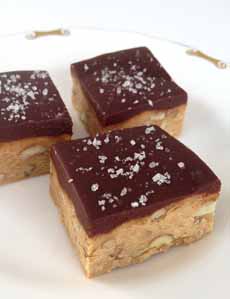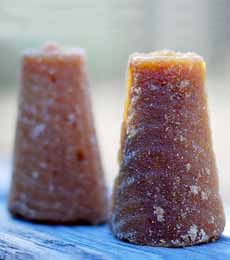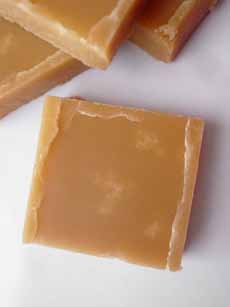Penuche Recipe, A Brown Sugar Confection Like Fudge
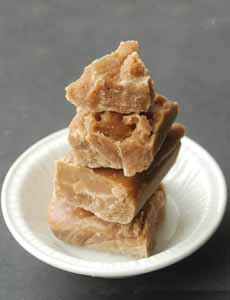 [1] Penuche, an old-fashioned brown sugar treat. Here’s the recipe from Endlessly Inspired.  [2] Nut-free penuche. Here’s the recipe from Fearless Fresh.
|
July 22nd is National Penuche Day. Penuche (pen NOO chee) is often called brown-sugar fudge, but it’s actually a brother or sister. While it follows the same preparation method, what makes it different is the use of brown sugar rather instead of white, and plain milk instead of cream. (The other ingredients common to both are butter and vanilla). > The recipe for penuche is below. > Also below is the history of penuche. Penuche has a tannish color, a result of caramelization. Caramelization also engenders a more complex sugar flavor, with notes of butterscotch or caramel. You may encounter penuche with different spellings: panocha, penocha, penochi, panucci, pinuche and penuchi, among others. In the Southern United States, it is called creamy praline fudge, and brown sugar fudge candy. Over time, some cooks substituted evaporated milk or sweetened condensed milk in their preparation. Penuche Variations In recent years, a version with maple syrup has surfaced in New England. With the popularity of salted caramels, versions have appeared topped with a layer of chocolate fudge and sea salt (a great idea, by the way). Nuts add another flavor dimension and can be larger pieces or chopped to your desired consistency. You may note that some recipes add corn syrup to prevent crystallization. But if you’re planning to scarf these within a few days, it’s not an issue. Ingredients 1. LIGHTLY BUTTER an 8×8-inch pan and set aside. 2. COMBINE the sugar and milk in a heavy-bottomed saucepan and bring to a boil. Stirring constantly, let the temperature rise to the soft-ball stage, 236°F. 3. REMOVE the pan from heat. Add butter but do not stir. Set aside to cool to lukewarm, 110°F. 4. ADD the vanilla and beat until the mixture is smooth, thick, and creamy. Add the nuts and pour into the prepared pan. When set, cut into squares. Variation For comparison, here’s a recipe for penuche made with condensed milk. |
|
|
PENUCHE HISTORY While brown sugar-based fudge existed previously, penuche appears to have originated in New England. Brown sugar, light or dark, provides a hint of molasses that yields a spicier, richer flavor than regular white sugar. The difference between a lighter and darker tan color is light versus dark brown sugar. A dark brown sugar recipe has more of a molasses taste. While the origin of penuche isn’t known for certain, it looks like a descendant of a Scottish confection called tablet. We’ve pieced together some background. Wherever the origin of penuche may lie, it became a New England favorite in the 1920s and subsequently migrated to fudge counters across the country. Now that you have the recipe, try some! Fudge was an accident, the result of an attempt to make caramels. And what a happy accident! |
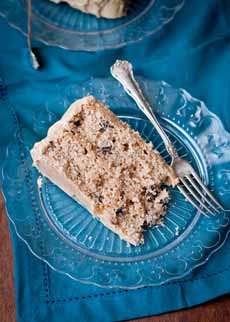 [5] Brown sugar frosting, popular with spice cakes, is called penuche frosting. Here’s the recipe from Cafe Johnsonia.
[6] Scottish tablet seems to be the closest relative to penuche. Here’s the recipe from London Eats. |
|
|
|
||
